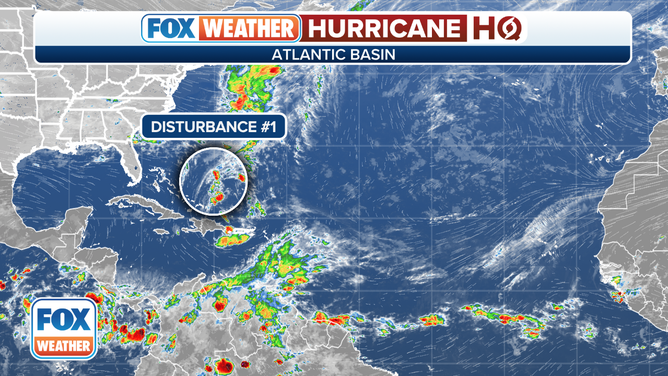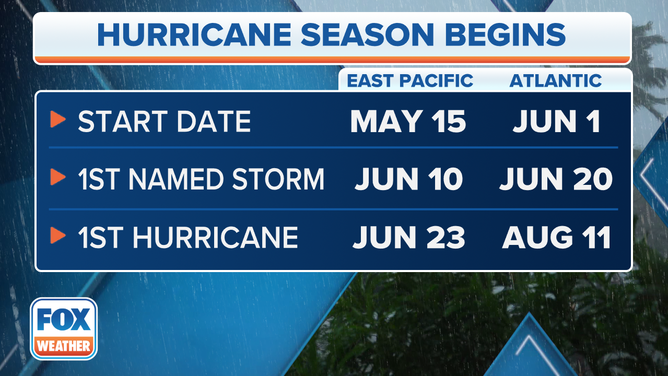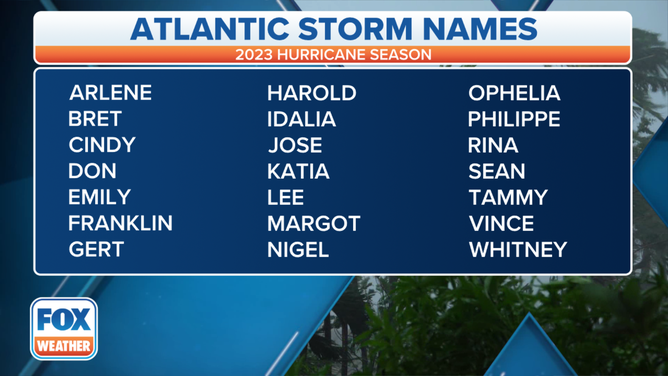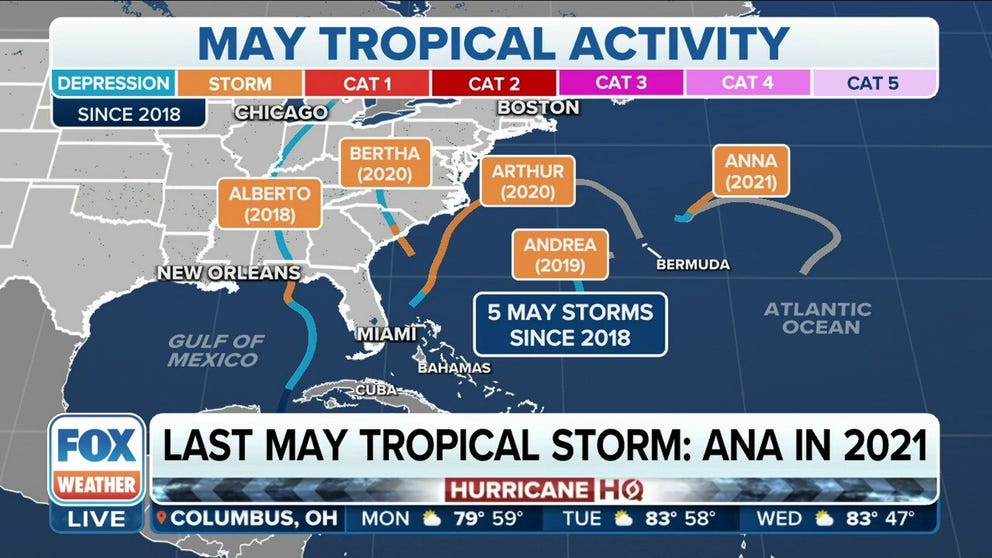Atlantic tropical disturbance northeast of the Bahamas not expected to develop
As the disturbance tracks toward the north-northeast, it could bring heavy rain to parts of Bermuda later this week.
May has history of tropical activity
FOX Weather Hurricane Specialist Bryan Norcross discusses May tropical development since 2018 and how only 3% of storms typically occur outside of hurricane season.
While the FOX Forecast Center continues to watch the Southeast coast for possible tropical development later this week, another disturbance is also being monitored in the southwestern Atlantic Ocean.
The tropical disturbance is currently producing disorganized showers and thunderstorms a couple of hundred miles northeast of the central Bahamas.

A disturbance in the southwestern Atlantic Ocean northeast of the central Bahamas is not expected to develop.
(FOX Weather)
On Monday afternoon, the National Hurricane Center (NHC) said it does not expect the disturbance to develop into a tropical depression.
"Environmental conditions have become more hostile, and development of this system is not expected while it moves north-northeastward at 5 to 10 mph over the southwestern Atlantic during the next day or so," the NHC said in a Tropical Weather Outlook on Monday afternoon.
As the disturbance tracks toward the north-northeast, it could bring heavy rain to parts of Bermuda later this week.
May has history of pre-season development
According to the NHC, only 3% of tropical cyclones form outside the official hurricane season, with May being the most popular month for out-of-season development.
A FOX Weather analysis found at least 90 tropical cyclones have formed out of season since the mid-1800s, with nearly half of those occurring in May.
The last tropical cyclone to form during May in the Atlantic Basin was Tropical Storm Ana in 2021. The brief storm developed east of Bermuda but quickly moved northeastward away from the archipelago and out to sea.
Four other storms have formed during May since 2018, but none strengthened beyond tropical storm status.

Five named storms have formed during May since 2018.
(FOX Weather)
Pre-season tropical development doesn't usually amount to much
If a tropical cyclone does form off the Southeast coast, it would be the second system of 2023.
A recent reanalysis of a low-pressure system determined that a subtropical storm formed off the East Coast in January.
WHERE TROPICAL STORMS, HURRICANES TYPICALLY OCCUR DURING EACH MONTH OF ATLANTIC HURRICANE SEASON

Average tropical formation dates.
(FOX Weather)
Development during the offseason is rare, and nearly all tropical disturbances before June 1 fail to develop due to a lack of sufficient ingredients.
Meteorologists tracked an area of disturbed weather in the Gulf of Mexico in April that failed to develop into a named entity.
The next tropical cyclone that gains enough organization to be classified as a tropical storm in the Atlantic Basin will earn the name Arlene.
The Atlantic hurricane season runs from June 1 through Nov. 30.

Here is the list of names for the 2023 Atlantic hurricane season.
(FOX Weather)
